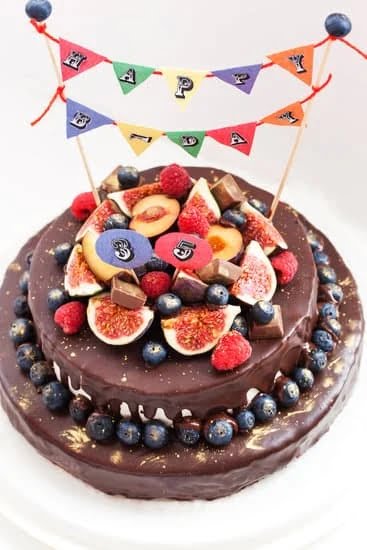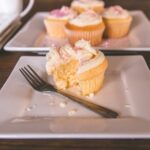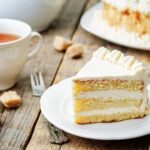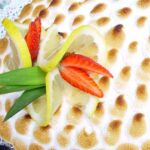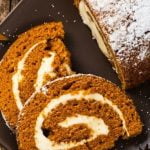Butter cakes have long been a favorite choice for decorators due to their versatility and ability to hold up well under the weight of elaborate designs. Whether you’re planning a birthday cake, wedding cake, or any other special occasion treat, finding the best butter cake recipe is crucial to ensure a delicious and sturdy base for your decorations.
In this article, we will explore the reasons behind the popularity of butter cakes for decorating and guide you through the process of creating the perfect butter cake.
When it comes to decorating cakes, a moist base is essential to ensure that your creations not only look beautiful but taste amazing too. Butter cakes excel in this regard with their delicate crumb structure and rich flavor profile. The dense yet tender texture of a well-made butter cake provides a strong foundation for intricate frosting work, fondant coverings, and various piping techniques.
To achieve the perfect butter cake, there are several key ingredients that cannot be overlooked. High-quality butter is at the heart of these cakes, lending richness and depth of flavor. Flour provides structure while sugar adds sweetness and moisture-locking properties. Eggs contribute to both structure and moisture retention, ensuring a balanced and stable cake batter. Lastly, flavorings such as vanilla extract or other extracts add complexity to elevate your butter cake from good to exceptional.
In the following sections, we will guide you step-by-step through preparing the ideal butter cake batter, providing tips on mixing techniques as well as proper baking temperatures and times. We’ll also delve into techniques for achieving a flawless texture with advice on creaming butter and sugar properly and accurately measuring ingredients. Additionally, we’ll explore different flavor variations you can try to customize your butter cake even further.
Join us as we embark on an exploration of everything you need to know about creating impeccable butter cakes for decorating purposes. With our comprehensive guide on decoration techniques and troubleshooting common challenges along the way, you’ll be equipped with all the knowledge necessary to turn your butter cake dreams into reality. So let’s get started on the path to finding and perfecting the best butter cake recipe for all your decorating endeavors.
The Importance of a Moist Butter Cake
One of the most important aspects of a butter cake recipe for decorating is achieving a moist and sturdy base. A moist cake not only tastes better but also holds up well under the weight of the decorations. This is crucial, especially when it comes to layer cakes or intricate designs that require support.
A butter cake is an ideal choice for decorating because it has a rich and tender texture that pairs well with various frosting and filling options. The high-fat content in butter contributes to the cake’s moisture, resulting in a deliciously soft crumb that melts in your mouth. Additionally, butter adds flavor and richness to the cake, enhancing its overall taste.
To ensure a moist butter cake, there are a few tips to keep in mind. First, make sure not to overbake the cake as it can lead to dryness. It’s essential to follow the recommended baking time specified in the recipe or adjust accordingly based on your oven’s temperature accuracy.
Secondly, consider incorporating ingredients that help retain moisture, such as sour cream or buttermilk. These additions not only add tenderness but also contribute to making your butter cake extra moist.
To achieve a sturdy structure for decorating purposes, proper layering techniques can be employed. Leveling each layer of the cake ensures evenness and stability when stacking them together. Additionally, using dowels or rods between layers can provide additional support when constructing taller cakes or elaborate designs.
Essential Ingredients for a Perfect Butter Cake
To create the perfect butter cake for decorating, it is essential to use the right ingredients. These key ingredients not only contribute to the delicious flavor of the cake but also provide the necessary structure and stability to support the decorations. Here are the essential ingredients that you need to ensure a perfect butter cake:
- Butter: As the name suggests, butter is a crucial ingredient in a butter cake. It adds richness and flavor to the cake while providing moisture and tenderness. It is important to use unsalted butter, as it allows you to control the amount of salt in your recipe.
- Flour: All-purpose flour is commonly used in butter cakes due to its versatility and ability to provide structure. Make sure to measure your flour accurately by using a kitchen scale or scoop-and-level method.
- Sugar: Granulated sugar not only sweetens the cake but also contributes to its texture and tenderness. It helps retain moisture and creates a light, tender crumb.
- Eggs: Eggs act as both a leavening agent and a binder in butter cakes. They add moisture, richness, and help with rising during baking.
- Flavorings: Vanilla extract is often used to enhance the flavor of a butter cake, but feel free to experiment with other extracts such as almond or lemon depending on your preferences.
It is worth noting that quality ingredients make a difference in the final outcome of your cake, so choose high-quality products whenever possible. Now that you have all your essential ingredients ready, let’s move on to creating the perfect butter cake batter in our step-by-step instructions section.
| Ingredients | Quantity |
|---|---|
| Butter (unsalted) | 1 cup (2 sticks) |
| All-purpose flour | 2 cups |
| Granulated sugar | 1 1/2 cups |
| Eggs | 4 large |
| Vanilla extract | 1 teaspoon |
Step-by-Step Instructions
One of the most important aspects of creating a perfect butter cake for decorating is preparing the batter correctly. By following a detailed step-by-step guide, you can ensure that your butter cake turns out moist, flavorful, and sturdy enough to hold up the decorations. Here are some essential instructions on how to prepare the butter cake batter:
- Gather all your ingredients: The key ingredients for a delicious and sturdy butter cake include unsalted butter, all-purpose flour, granulated sugar, eggs, and flavorings such as vanilla extract. Make sure to have everything measured and ready before you start mixing.
- Creaming the butter and sugar: In a large mixing bowl, cream together softened unsalted butter and granulated sugar until light and fluffy. This process helps to incorporate air into the batter, resulting in a lighter texture.
- Adding eggs: Gradually add eggs one at a time into the creamed mixture while continuing to mix on low speed. This allows each egg to fully incorporate into the batter before adding the next one.
- Mixing dry ingredients: In a separate bowl, whisk together all-purpose flour with baking powder and salt. Gradually add this dry mixture to the creamed mixture in thirds, alternating with additions of liquid (such as milk or buttermilk) in between each addition.
- Mixing techniques: Use gentle folding or stirring motions when combining the dry ingredients with the wet ingredients. Overmixing can result in a dense cake texture.
- Baking temperatures and times: Preheat your oven according to the recipe instructions. Grease and flour your baking pans or line them with parchment paper before pouring in the batter. Follow the specified baking temperature and time guidelines for optimal results.
By following these step-by-step instructions, you will be well on your way to creating a perfectly prepared butter cake batter that serves as an excellent base for decorating. Taking care during each stage of preparing the batter will help ensure a moist and sturdy cake.
Tips for Achieving a Flawless Texture
To achieve a flawless texture in a butter cake, it is important to use proper techniques and accurate measurements when preparing the batter. The texture of the cake greatly affects how well it will hold up under decorations and give it a tender crumb that is both pleasing to the palate and visually appealing.
One of the key steps in achieving a flawless texture is properly creaming the butter and sugar. Creaming involves beating the butter and sugar together until light and fluffy, which incorporates air into the mixture. This process helps to create a light and tender cake by creating pockets of air that expand during baking, resulting in a softer texture. It is important to ensure that the butter is at room temperature before creaming to achieve the desired consistency.
Accurate measuring of ingredients is also crucial in achieving a perfect butter cake texture. Using too much or too little flour, sugar, or other ingredients can significantly affect the outcome of the cake. It is recommended to use measuring cups or a kitchen scale for precise measurements. Additionally, sifting dry ingredients such as flour helps to remove any lumps and ensure an even distribution within the batter.
Here are some tips for achieving a flawless texture in your butter cake:
- Use room temperature ingredients: Allowing ingredients such as butter, eggs, and milk to come to room temperature before incorporating them into the batter will help them blend more smoothly and result in a lighter texture.
- Alternate adding dry ingredients with wet ingredients: When adding them to the creamed mixture, alternate between adding portions of dry ingredients (usually flour) and wet ingredients (such as milk or sour cream). This helps prevent overmixing and ensures even distribution of all components throughout the batter.
- Avoid overmixing: Overmixing can lead to a dense and tough cake. Once all ingredients are combined, mix just until everything is well incorporated.
- Test for doneness: Always perform the toothpick test by inserting it into the center of the cake. If it comes out clean or with a few crumbs clinging to it, the cake is done. Overbaking can result in a dry texture.
By following these tips and techniques, you will be able to achieve a flawless texture in your butter cake, providing a perfect canvas for your decorations. Remember to practice and experiment to find the perfect balance of flavors and textures that suit your preferences.
Flavor Variations
When it comes to butter cakes for decorating, the flavor options are endless. By customizing the flavors of your butter cake, you can create a truly unique and personalized creation that is sure to impress. Here are some flavor variations to consider when making your own butter cake.
Citrus Zest
One way to add a burst of freshness and brightness to your butter cake is by incorporating citrus zest. Whether it’s lemon, orange, or lime zest, adding it to the batter will give your cake a tangy and aromatic flavor profile that pairs well with various frostings and fillings. Just be sure to use organic citrus fruits and finely grate only the colored part of the peel, avoiding any bitter white pith.
Extracts
Another easy way to infuse different flavors into your butter cake is by using extracts. Vanilla extract is a classic choice that adds a warm and comforting aroma, while almond extract provides a subtle nuttiness. Other popular extracts include coconut, mint, or even maple for a fall-inspired twist. Remember to only use high-quality extracts in small amounts to avoid overpowering the delicate flavors of the butter cake.
Fruit Preserves
For those looking for an extra touch of sweetness and moisture in their butter cakes, incorporating fruit preserves between the layers can be a game-changer. Whether it’s strawberry, raspberry, apricot, or any other favorite fruit preserve, spreading a generous layer on top of each cake layer before stacking them will add both flavor and visual appeal.
Chocolate Ganache
If you’re a chocolate lover, consider adding chocolate ganache as a filling or frosting option for your butter cake. Made from melted chocolate combined with heavy cream or butter, ganache creates a smooth and velvety texture that complements the richness of the buttery base. You can either pour the ganache over the cake or spread it between the layers, depending on your desired outcome.
By experimenting with these flavor variations or even combining them, you can elevate your butter cake to new heights. Don’t be afraid to get creative and think outside of the box when it comes to flavors for decorating. After all, a delicious and unique flavor profile will make your butter cake stand out and leave a lasting impression on anyone who tries it.
Decorating Techniques and Tips
Buttercream Frosting
One popular option for decorating a butter cake is using buttercream frosting. Buttercream frosting is a versatile and delicious choice that can be easily flavored and colored to match any theme or occasion. To achieve a professional-level result, it is important to properly prepare the buttercream frosting by following these tips:
- Use high-quality ingredients: Start with unsalted butter, powdered sugar, and pure vanilla extract for the best flavor and consistency.
- Soften the butter: Allow the butter to come to room temperature before starting to ensure it blends smoothly with the other ingredients.
- Beat the butter well: Cream the softened butter until it becomes light and fluffy, as this will create a smooth and creamy texture in the frosting.
- Gradually add powdered sugar: Add the powdered sugar gradually while beating the mixture, about 1/2 cup at a time, until you reach your desired sweetness level.
- Add liquids sparingly: If necessary, add small amounts of liquid (such as milk or heavy cream) to adjust the consistency of the buttercream frosting. However, be cautious not to over-add liquid, as it can make the frosting too thin.
Fondant Decorations
Another popular way to decorate a butter cake is using fondant. Fondant allows for intricate designs and smooth finishes that give cakes a polished and professional appearance. Here are some tips for working with fondant:
- Knead fondant properly: Before applying fondant to the cake, knead it well until it becomes soft and pliable, which makes rolling easier.
- Roll out evenly: Dust your work surface with powdered sugar or cornstarch to prevent sticking, then roll out the fondant evenly using a rolling pin until it reaches your desired thickness.
- Lift carefully: When transferring rolled-out fondant onto the cake, use a rolling pin to carefully lift it and drape it over the cake.
- Smooth and trim excess: Gently smooth the fondant over the cake, starting from the top and working your way down. Trim off any excess fondant using a sharp knife or pizza cutter for clean edges.
Piping Techniques
Piping techniques can be used to create intricate patterns, floral designs, or personalized messages on a butter cake. Here are some tips for achieving professional-looking results with piping:
- Use the right piping tip: The choice of piping tip will determine the shape and size of your design. Experiment with different tips to find the one that best suits your desired outcome.
- Consistency is key: Ensure that your icing is at the correct consistency for piping by adding more powdered sugar if it is too runny or a small amount of milk if it is too stiff.
- Practice proper pressure control: Apply even pressure while squeezing the piping bag to achieve consistent lines or shapes in your design.
- Keep it steady: Steady your hand as you pipe by resting your elbow on the table or another stable surface for better control.
With these decorating techniques and tips, you can turn a simple butter cake into an eye-catching masterpiece that will impress any occasion or celebration. Experiment with different methods and unleash your creativity to personalize and bring life to your butter cake decorations.
Showcase of Inspirational Designs
One of the most exciting aspects of decorating a butter cake is the opportunity to showcase your creativity and create something visually stunning. To inspire and ignite your imagination, this section will feature a gallery of breathtaking butter cakes decorated by professionals and baking enthusiasts. By exploring these impressive designs, you can gain ideas and find inspiration for your own creations.
In this showcase, you will find a wide range of designs that demonstrate the versatility of butter cakes for decorating. From elegant wedding cakes with delicate fondant flowers to whimsical birthday cakes adorned with vibrant sprinkles and colorful buttercream frosting, there is something to suit every occasion and style.
The showcased butter cakes will also highlight different techniques used in cake decorating, such as piping intricate patterns, sculpting edible figures or objects, and incorporating various textures like ruffles or pleats. You may discover new techniques that you’ve never tried before or find fresh ways to refine your existing skills.
This gallery aims to spark your creativity and encourage you to experiment with different decorations and designs. Remember that while these cakes may seem elaborate, with practice, patience, and dedication, you too can achieve professional-level results. So don’t be afraid to let your imagination run wild as you explore this showcase of inspirational designs for butter cakes.
Troubleshooting
When it comes to decorating a butter cake, there are several common challenges that may arise. However, with some tips and tricks, you can easily overcome these obstacles and create a stunning masterpiece. One of the first challenges you may encounter is leveling the cake layers.
Uneven layers can make it difficult to achieve a professional-looking result. To ensure even layers, it’s important to use a long serrated knife or a cake leveler to trim off any domed tops and create a flat surface.
Another challenge that many encounter is preventing frosting from melting or sliding off the cake. This can be especially problematic if you live in a hot and humid climate. To prevent this issue, make sure to cool your cake completely before applying any frosting. Additionally, avoid leaving the frosted cake in direct sunlight or in warm areas for an extended period of time. If necessary, you can also refrigerate the cake briefly before serving to help firm up the frosting.
Achieving a smooth finish on your butter cake is another common challenge when decorating. Crumbs often tend to mix with the frosting and create an imperfect appearance. To avoid this, it’s important to apply a thin layer of frosting called crumb coat before adding the final layer. The crumb coat catches any loose crumbs and acts as a base for the final layer of frosting which should be applied after chilling the crumb coat in the refrigerator.
By addressing these common challenges during your butter cake decorating journey, you’ll be well on your way to creating beautiful and delicious creations that are sure to impress your friends and family.
Conclusion
In conclusion, a moist and delicious butter cake is the perfect foundation for any decorated creation. The key ingredients of butter, flour, sugar, eggs, and flavorings are essential to achieve a sturdy cake that can hold up the weight of decorations. By following the step-by-step instructions and incorporating tips for achieving a flawless texture, readers can create a butter cake with a smooth and tender crumb.
Furthermore, there are numerous flavor variations that can be explored to customize the butter cake according to personal preferences. From adding citrus zest or extracts to incorporating fillings like fruit preserves or chocolate ganache, the options are endless for creating a truly unique and flavorful butter cake.
Once the cake is baked and cooled, it’s time to unleash creativity with decorating techniques. Whether it’s using buttercream frosting, fondant, or various piping techniques, readers can achieve professional-level results with proper guidance and practice. The showcase of inspirational designs provides readers with ideas and inspiration for their own creations.
Although challenges may arise when decorating a butter cake, such as leveling the layers or preventing frosting from melting, readers need not worry as troubleshooting tips have been provided to address these common issues.
Overall, by following the best butter cake recipe for decorating discussed in this blog post, readers can confidently embark on their own baking adventure at home. With patience and practice, they too can create stunningly decorated butter cakes that will impress family and friends alike. So go ahead and take your passion for baking to new heights by trying out this recipe today.
Frequently Asked Questions
What is Paula Deen’s butter cake?
Paula Deen’s butter cake is a delicious and indulgent dessert recipe that has become synonymous with her name. It is a rich and moist cake that is loaded with butter, giving it a decadent flavor and texture.
The recipe typically involves creaming together butter and sugar, then adding eggs, flour, and other ingredients to create a dense yet tender cake. Many variations of Paula Deen’s butter cake include additions such as vanilla extract or buttermilk to enhance the taste.
What is the difference between a butter cake and a pound cake?
While both butter cakes and pound cakes are classic desserts made with butter as the main ingredient, there are some differences between the two. The key distinction lies in their ratios of ingredients. A traditional pound cake gets its name because it traditionally contains one pound each of butter, sugar, eggs, and flour.
This results in a dense, heavy cake with a fine crumb texture. On the other hand, butter cakes typically have less butter compared to pound cakes, resulting in a lighter texture while still being moist and flavorful.
What butter is best for cakes?
When it comes to choosing the best butter for cakes, it ultimately depends on personal preference and availability. Generally, unsalted butter is preferred for baking cakes as it allows better control over the amount of salt in the recipe. Unsalted butter also ensures that the natural flavors of the cake shine through without any interference from excess saltiness.
However, if unsalted butter is not available or you prefer the touch of saltiness in your cake, using salted butter can still yield delicious results. Ultimately, select a high-quality butter that has good flavor and consistency for the best possible outcome in your cake baking endeavors.

Welcome to our cake decorating blog! My name is Destiny Flores, and I am the proud owner of a cake decorating business named Cake Karma. Our mission is to provide delicious, beautiful cakes for all occasions. We specialize in creating custom cakes that are tailored specifically to each customer’s individual needs and tastes.

